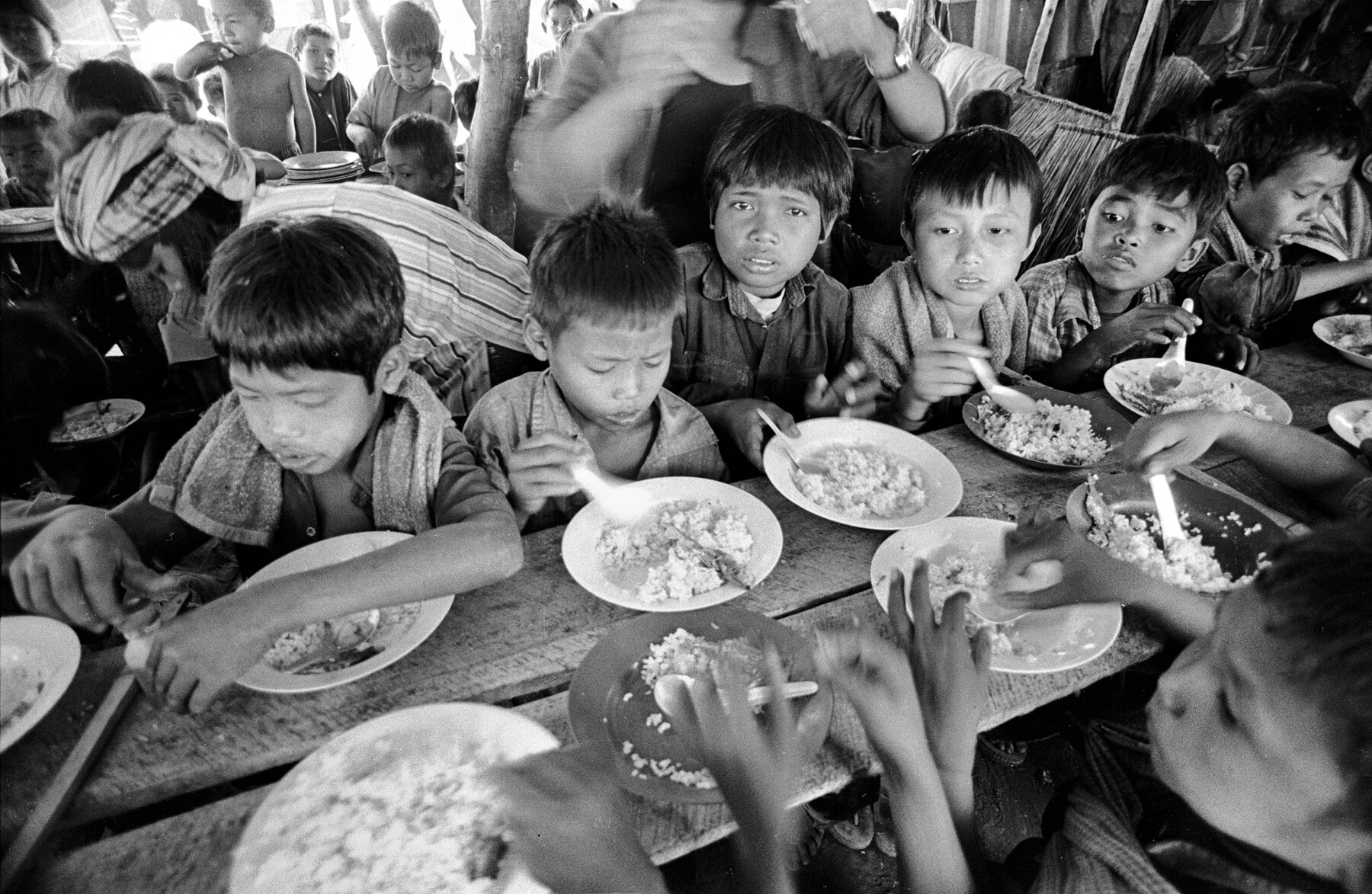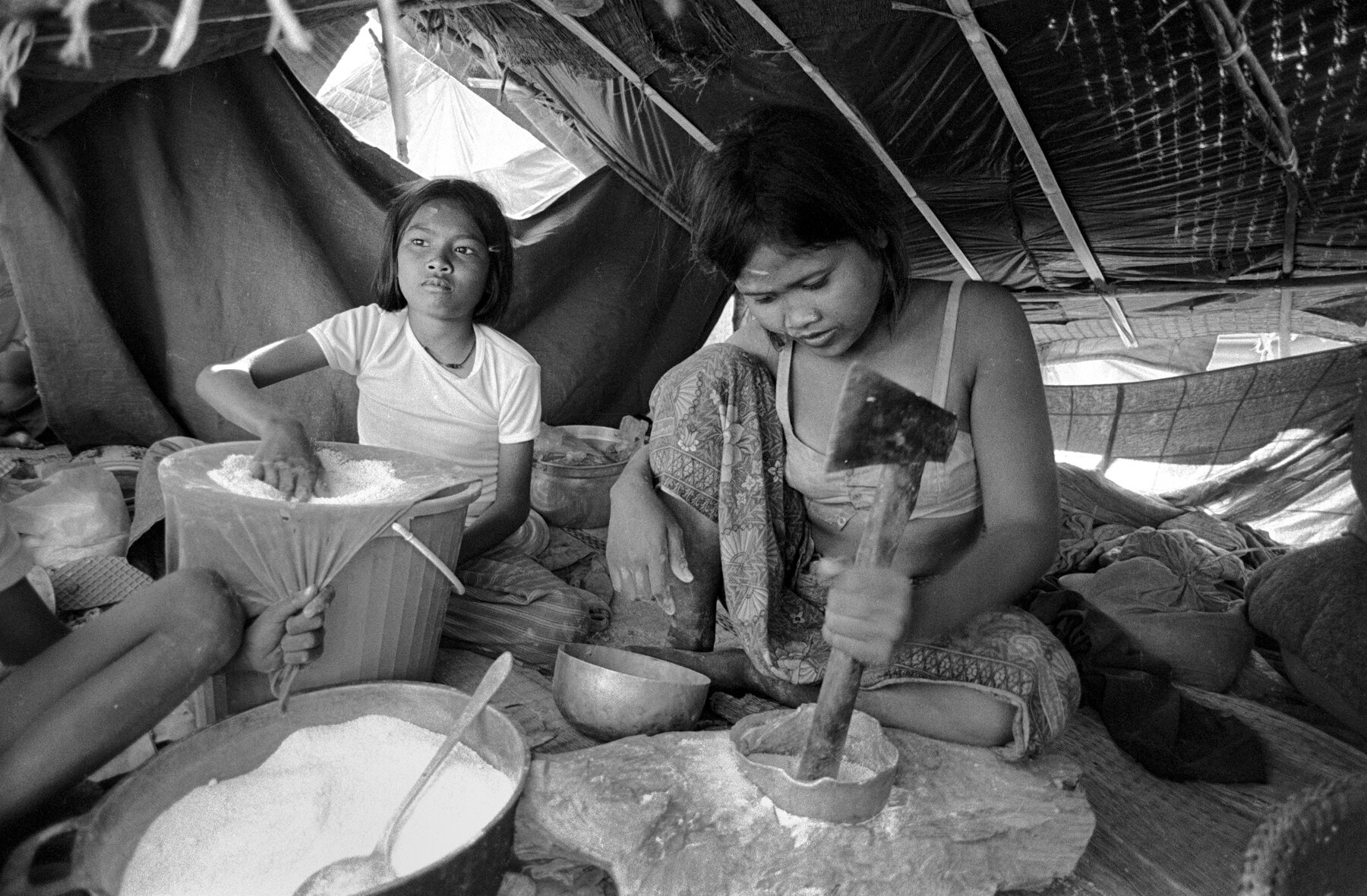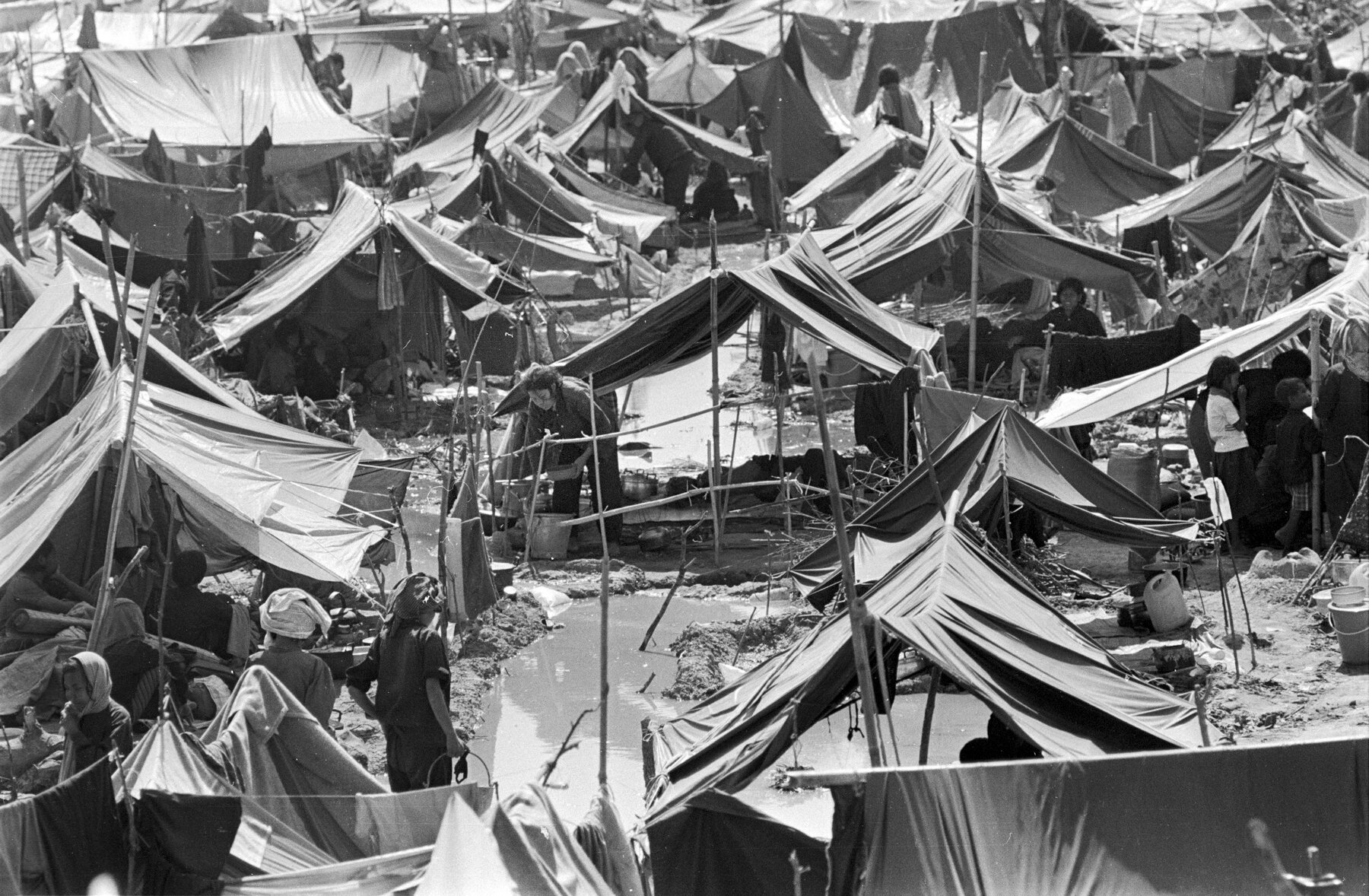
1979 – At The border of Cambodia and Thailand
Thailand workers were hired to clear out the tall dry grasses for the new swath of temporary shelters to be built.
The open fields were cleared down to the stubble to prevent fires and make setting up the tents easier.
Bamboo is the main framing material and is one of the strongest natural building materials.
Preparing The Camps
“As recently as 1975, there were 8 million Cambodians. Now the population has been estimated to be roughly 5 million. That many have been decimated. Those 3 million have died from starvation and disease; some have been killed and some have fled. Unless we exercise our opportunity here in the U.S. Senate and America to help focus world opinion on what is happening, there is a very real possibility that the Khmer race may face extinction. Equally Important, it seems to us that this is an opportunity for us as Americans to help mobilize national feelings about ourselves as individuals so we transcend ourselves and focus upon higher humanitarian motivations and feelings that are so important to us as human beings.” Report from Montana Senator Maxwell Baucus from the field.
Barbwire, bamboo poles and tarps were trucked in for the camp infrastructure.
Now for many, the names of the camps are beginning to fade. Sa Kaeo, Khao-I-Dang, Nong Samet, Bann Mak May Moon are notations in Wikipedia. These camps, some inside Cambodia, and some in Thailand, housed up to 800,000 people at one point. The fields at Sa Kaeo and Khao-I-Dang were cleared and barbed wire, bamboo poles and plastic tarps were brought in to make medical tents, food distribution centers and temporary housing for the thousands that were brought in each day.
Today’s Cambodian population is mostly young, many born after the great exodus and Pol Pot tragedies, There is little memory of all that transpired during the great losses from 1975 to 1980.

Word spread in the border camps just inside Cambodia, that food, medicine and shelter would be provided at Khao-I-Dang, Tens of thousands moved everything they had to staging areas just inside Thailand north of Aranyaprathet. It was chaos and in the heat I was amazed that everyone stood stoically waiting for transport to places newly carved out of the Thailand countryside.
Young girls wait in line for rice either with a bowl or mostly by opening their head scarves.
Barbed wire contained the refugees at Khao-I-Dang

Sa Kaeo Refugee Camp, which held 35,000 refugees.
Feeding the Hungry
Rice was handed out to long lines of woman waiting for hours in the hot sun.
The Land Bridge (from Wikipedia)
Fighting between the Vietnamese and anti-Vietnamese forces disrupted Cambodian rice production in 1979. A country-wide famine was anticipated in 1980. Aid agencies estimated that up to 2.5 million Cambodians were at risk of starvation. The pro-Vietnamese government in Phnom Penh demanded that all humanitarian aid be channeled through it, and some UN and aid organizations attempted to work with the government. However, there were reports of "delivery and distribution problems".
The "land bridge", conceived by aid worker Robert Patrick Ashe, was a relief measure that bypassed the Phnom Penh government. Humanitarian organizations and international aid agencies brought rice and other rice seed to Nong Chan Refugee Camp on the Cambodian border in Thailand and distributed the rice to Cambodians who came to the border. "Vast numbers of Cambodians with oxcarts and bicycles...came to the border every day" and were given sacks of rice to take home with them.
Finding adequate water was a challenge. Many used polluted and unsafe water to wash their clothes and pans.
Rice became abundantly available in the distribution centers. Getting it out to the camps was the challenge.
When I first arrived at the camps very little infrastructure was in place. It was being built on the fly. Black market operations along the camp borders started to kick in and people were exchanging gold and silver for cooking items, rice and fish. It was frowned upon by the Thai military. The problem was mainly all the gold and sliver and cash that was floating around these camps. Many men were armed. One day I encountered two men that had been robbed and shot. They died in front of me. It was a very difficult time and everyone had to watch their backs.
When rice was handed out, children stayed behind to find pieces of rice that had fallen to the ground.
Children’s feeding center at Khao-I Dang
Black-marketers hurridly worked the camp perimeter before the Thai military found and removed them.
Young sisters make rice flower.

The Challenge Ahead
The camps that I visited were almost indescribable. A camera came the closest to bringing back the breadth of the problem. But photographs capture only two-dimensions in a world where the pain and suffering goes many layers deep. At the same time, it’s so easy to have fatigue from all of the images of refugees. Each painful picture and story adds to a numbness that we all can experience.
Though this happened over 40 years ago, the sounds and the smells from having 150,000 people using an open trench for a latrine, the pervasive malaria, the moaning and hushed crying of people and young children, it’s like light traveling from a distant star. This story travels though time undiminished for those who lived through it. For us this is a marker of what war, dictators and despots can inflict upon an innocent people. We must never forget. For Cambodians, the fall of the Khmer Rouge has become known as the country’s second birth. Let us hope this will be a new opportunity for Cambodia and that the future will not repeat the past.
Children seemed happy to have a safe place to play
There were squalid conditions during the early days of Sa Kaeo where two hundred people lived in the area of a standard house lot.
It was difficult to see how families placed themselves in such impossible spaces


















